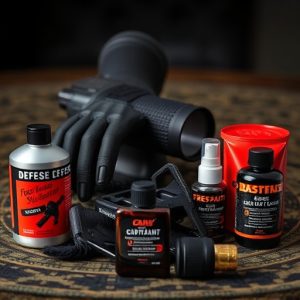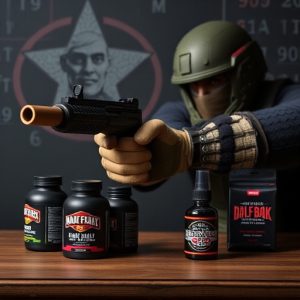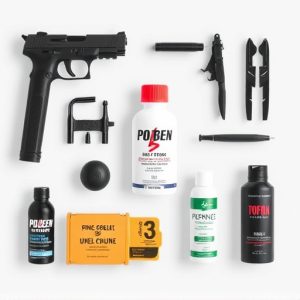Navigating Less Lethal Weapons: Personal Defense Products Unveiled
Personal defense products, including tasers, pepper spray, stun guns, and impact tools like batons,…….
Personal defense products, including tasers, pepper spray, stun guns, and impact tools like batons, are gaining popularity for their ability to incapacitate without causing permanent harm. Widely adopted by both law enforcement and civilians, these non-lethal tools offer a balance between firearms and non-violent methods. The market offers diverse options catering to specific needs, from stun guns and pepper spray to tactical batons and personal alarms. While non-lethal force tools provide advantages in conflict resolution and crowd control, critics raise concerns about proper training, ethical implications, and regulatory differences worldwide. Selecting the right tool depends on understanding individual needs and environmental risks, with various products tailored for everyday carry, close-quarters combat, outdoor adventures, and more.
“Uncover the world of less lethal weapons—a transformative approach to personal safety. In today’s dynamic landscape, understanding these tools is paramount. This comprehensive guide explores various types of non-lethal force devices available in the market, from pepper spray to stun guns. We weigh the benefits and drawbacks, delve into legal aspects, and provide insights on selecting the ideal self-defense tool tailored to individual needs. Discover how these innovative personal defense products can empower individuals while adhering to stringent regulations.”
Understanding Less Lethal Weapons: A Comprehensive Overview
Less lethal weapons, also known as non-lethal or alternative force tools, are designed to incapacitate or control individuals without causing permanent harm or death. These weapons play a crucial role in personal defense products, offering a balance between conventional firearms and non-violent methods. They have gained significant attention, especially in law enforcement and civilian self-defense contexts, as they provide options for de-escalation and minimizing injuries during critical incidents.
The concept behind less lethal weaponry is to deploy tools that can temporarily disable or restrain suspects or aggressors, allowing for a safer resolution of conflicts. These weapons include various types such as tasers, pepper spray, stun guns, and impact weapons like batons. Each category employs different mechanisms, from electrical shocks and chemical irritants to physical force, to achieve control while minimizing the risk associated with lethal force.
Types of Personal Defense Products on the Market Today
In today’s world, individuals are increasingly looking for effective yet less lethal personal defense products to safeguard themselves and their loved ones. The market offers a wide array of options, catering to diverse needs and preferences. From non-lethal stun guns and pepper spray to tactical batons and personal alarm devices, these tools provide users with a sense of security and empowerment.
Each type of personal defense product has its unique features and mechanisms. Stun guns, for instance, use electrical current to temporarily incapacitate an attacker, while pepper spray irritates the eyes and respiratory system. Tactical batons are designed for close-quarters combat, allowing users to defend themselves with greater mobility. Personal alarms, often in the form of small, portable devices, emit loud sounds to startle potential assailants and alert others for help. This variety ensures that individuals can choose the product best suited to their specific self-defense needs and comfort levels.
Advantages and Disadvantages of Non-Lethal Force Tools
Non-lethal force tools offer a range of advantages for law enforcement and personal defense products, providing an alternative to deadly force in certain situations. These tools are designed to incapacitate or deter individuals without causing permanent harm, offering a more nuanced approach to conflict resolution. Tasers, pepper spray, and stun guns are common examples, each with its unique mechanism to disrupt an aggressor’s movement or perception while allowing for a controlled response. They are particularly useful in crowd control scenarios, where a quick de-escalation of tension is crucial.
However, critics argue that the use of non-lethal weapons may still result in serious injury or even death under specific circumstances. The effectiveness and safety of these tools depend on proper training and adherence to guidelines, which can be a concern for both law enforcement agencies and individuals seeking personal defense options. Additionally, some activists and human rights groups raise ethical questions about the increasing reliance on non-lethal force, suggesting that it may normalize the use of physical coercion and shift the balance between security and individual freedoms.
Legal Considerations and Regulations Surrounding Less Lethal Weapons
The legal landscape surrounding less lethal weapons, also known as non-lethal or alternative force tools, varies across jurisdictions, reflecting a delicate balance between public safety and individual rights. In many regions, the availability and use of these personal defense products are strictly regulated to ensure responsible deployment. Authorities often mandate specific training and certifications for individuals seeking to acquire and employ less lethal options like Tasers, pepper spray, and stun guns. This regulatory framework aims to prevent misuse while empowering citizens with tools for self-defense.
Regulations may include age restrictions, waiting periods, background checks, and registration requirements. Some regions differentiate between personal use and law enforcement adoption, leading to varying standards. These legal considerations are pivotal in shaping public perception and the effective integration of less lethal weapons into societal contexts, particularly in scenarios involving civil unrest or self-defense against perceived threats.
Choosing the Right Self-Defense Tool for Your Needs
When selecting a self-defense tool, understanding your specific needs is paramount. Different scenarios call for diverse tools—from compact pepper spray ideal for everyday carry to stun guns offering a longer range. Personal defense products come in various forms, each catering to unique situations. For instance, if you’re concerned about close-quarters attacks, a tactical flashlight can be a powerful deterrent, blinding and disorienting an assailant. Alternatively, personal alarms are compact and easy to carry, emitting ear-piercing sounds to startle and scare off potential threats.
Knowing your environment and potential risks is key to making an informed choice. Urban dwellers might opt for multi-purpose tools combining pepper spray and a stun device for added protection in high-density areas. Outdoor adventurers should consider bear spray, designed to deter aggressive wildlife encounters. Always research and test different personal defense products to ensure they meet your requirements effectively and comfortably.


